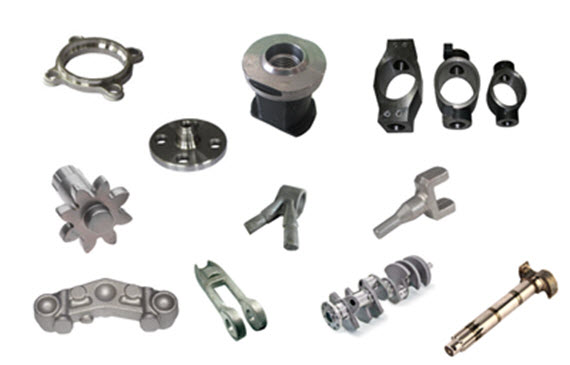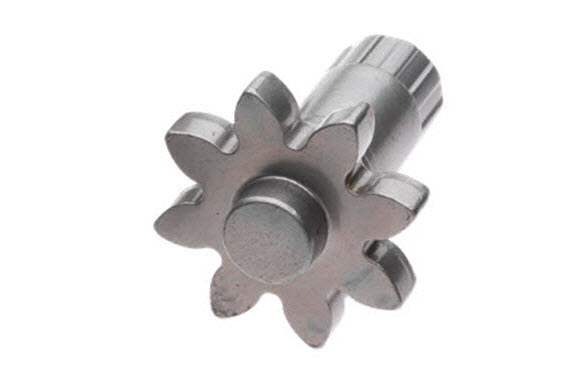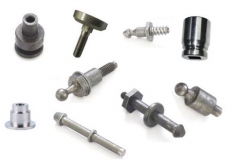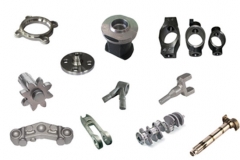Forging
ForceBeyond provides superior quality ferrous and non-ferrous forging parts and components for a wide range of industries including automotive, food dairy, machinery, medical, plumbing, watering, mining, petrochemical, electrical, energy, aerospace, submarine and others.
What Is Forging?
As a major metal fabrication, forging is a metal forming technique that uses localized forces of compression. Forgings have undergone major changes that lead to more efficient, faster and more durable processes. Today’s forging is usually done using electric, hydraulic or compressed air driven forging presses or hammer tools.

Cold Forging Vs. Hot Forging
There are two main types of forging — hot forging and cold forging. Hot forging and cold forging are two different metal forming processes that deliver similar results.
Hot forging requires the metal to be heated above its recrystallization temperature. This can mean heating metals up to 2,300 degrees Fahrenheit. The main benefit of hot forging is the decrease in energy required to form the metal properly. This is because excessive heat decreases yield strength and improves ductility. Hot forged products also benefit from the elimination of chemical inconsistencies.
Cold forging typically refers to forging a metal at room temperature, though any temperature below recrystallization is possible. Many metals, such as steel high in carbon, are simply too strong for cold forging. Despite this hindrance, cold forging does edge out its warmer equivalent when it comes to standards of dimensional control, product uniformity, surface finish and contamination. Cold forging encompasses numerous techniques, including bending, extruding, cold drawing and cold heading. However, this increased versatility comes at a cost, because cold forging requires more powerful equipment and may call for the use of intermediate anneals.
Advantages of Forging
- Maintain grain flow of the metal
- Retain the strength of metal
- Elimination of defects, inclusions and porosity.
- Relative low costs
- High production output

| Material | Characteristics | Application |
|---|---|---|
| Stainless Steel | Corrosion-resistant |
|
| Low Carbon and Low Alloy Steel | Easily processed Good mechanical properties Low material cost |
|
| HSLA/Microalloy Steel | Good mechanical properties Low material cost Simple thermomechanical treatment |
|
| Aluminum | Good strength-to-weight ratio Readily forged |
|
| Aluminum A356.0 | Good strength-to-weight ratio Readily forged |
|
| Nickel-Base Superalloy | Oxidation resistance Creep-rupture strength |
|
| Titanium | High strength Low density Excellent corrosion resistance |
|
Secondary Operations of Forging We Offer
- High precision machining
- Milling, drilling, tapping, e-coating, anodizing
- Painting, sanding, shot blasting, powder coating, chrome plating
Cold Forging Parts and Hot Forging Parts
Our forging solutions include hot forging and cold forging. Please click links below for detailed information.
Sources
- American Foundry Society. “Metal Casting”
- Wikipedia. “Investment Casting“, “Sand Casting“
- efunda. “Sand Casting“
- The Investment Casting Institute. “What is Investment Casting?“
- The Library of Manufacturing. “Investment Casting“
- Forging Industry Association “Forging Industry“
Our Internal Resources for Die Casting, Investment casting, Forging and Sand Casting
- Die Casting
- Aluminum Die Casting
- Zinc Die Casting
- A356 Aluminum Casting with T6 Heat Treatment
- Magnesium Die Casting
- Investment Casting
- Stainless Steel Casting
- Duplex Stainless Steel Casting
- Super Duplex Stainless Steel Casting
- Titanium Casting
- Carbon & Low Alloy Casting
- Forging
- Cold Forging
- Hot Forging
- ECO BRASS C69300 Brass Forging
- Sand Casting (Aluminum Sand Casting, Ductile Iron Sand Casting, Gray Iron Sand Casting)
- Specialty Fittings and Fasteners
- Precision CNC Machining and Secondary Operations


